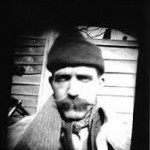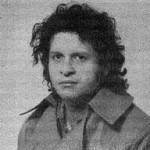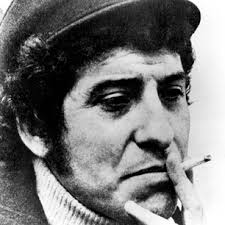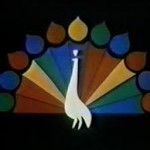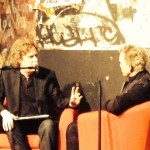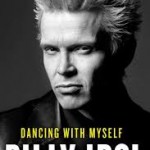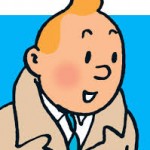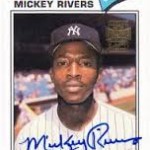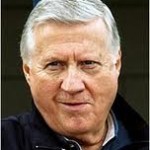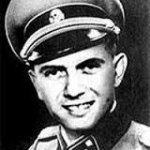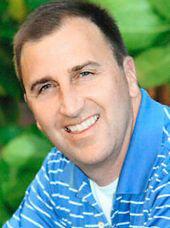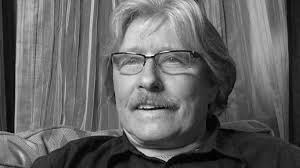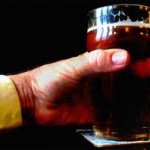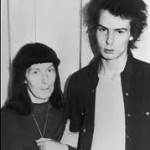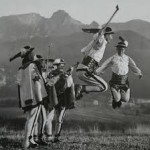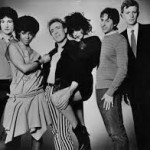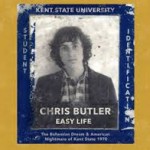It is time, friends.
We need a true form of musical activism. We need artists willing to risk everything to expose the cultural atrocities and mammon-driven careerist lies spread by the wheezing rock’n’roll machine.
RELATED: Who is the greatest bass player of all time?
RELATED: The Fauxplacements or What Makes a Reunion a Reunion?
We, we Americans, need our Crass, our Mekons, our Billy Childish, our Billy Bragg, our Chumbawumba. We need artists that filter every action through a desire to expose lies and create positive cultural models; and we need our musical Duchamp, Tzara, Dali, Arp, artists willing to make art extreme and art gorgeous and art that makes a statement about all the wrong turns music has made because of commerce and so-called common sense. And we need it now, more than ever; and such a movement has more potential to thrive, now more than ever, because of the virus of plurality and ubiquity that is the Interstream.I am inspired to type this (not yet a manifesto but perhaps a prologue to a manifesto) because I have heard the new track by the Foo Fighters. It is the most vapid, despicable, corrupt and unentertaining piece of crap I have ever heard (with the possible exception of ELP’s “Karn Evil 9”). The new Foo Fighters track sounds like late-period Blue Oyster Cult attempting to write a Tom Petty song but changing their mind midway and settling for any overly-macho and ham-fisted imitation of MTV-era Aerosmith, I swear to you it’s that bad; and if this is what claims to uphold the flag of rock’n’roll these days, let’s fucking kill this animal and start again. Let’s use all our energy and all our connections to find a Steve Ignorant or Jon Langford or punk rock Steve Earle to climb on the cardboard Golgotha sitting on the John Varvatos cash-pile consumerist rock has become and tell this rock’n’roll Herod that his time is over. And let’s find some hacker genius to make sure that every time someone tries to download this rotten piece of Classic MTV fuckery masquerading as punk statement they get “Rowche Rumble” by the Fall instead.
Foo Fighters were harmless enough when they were just churning out reasonable Husker Du imitations, but somehow they got it in their head that they were the God-appointed Czars of rock’n’roll and keepers of the punk rock flame; so now they have to make this really big dramatic music with lots of quiet parts and loud parts and even SWEAR words in it because THEY ARE SO FUCKING PUNK ROCK, though really it all just sounds like a track leftover from BÖC’s Imaginos plus a hefty dose of Hagar-era Van Halen bombast filtered through one of those frightening Billy Steinberg songs Cheap Trick recorded when they were desperate for a hit EXCEPT THE DIRTY WORDS IN THE SONG MAKE US IMPORTANT AND MAKE US REBELS, MAN, BECAUSE WE ARE SO PUNK ROCK.
Generally, us old people want nothing more than to be back inside, back in the game, which makes us afraid to make enemies; but fuck it, I have lived and breathed through some of the best times this old beast rock’n’roll had to its name, and I owe it to these pleasures, these extremes of energy and emotion, I owe it to every great band I ever saw, to do everything I can to call this piece of sad decay exactly what it is: a sign of the absolute rotten corruption of this genre. And I recognize that all the pieces are in place to use the new-model music industry for POSITIVE CHANGE, and to combat this kind of over-fucked fucked-out old corpse.Let this fax of the xerox of the shadow of the chalk outline of punk be combated, not with violence but with an alternative, with a new folk that sounds like howls of hillbilly cats and punk green and lean and honest. Let’s remember that the line between crispy Crass fan and crusty Burning Man daze dog is small indeed, and should be smaller; and lets unite to celebrate free music, and instead of condemning the cheapness and ubiquity of the resource, let’s celebrate this reality and utilize that ease of distribution to preach something truly meaningful. Let every song have a message, let every song have the courage to send shivers or be repulsive or even be absolute sugar. More than ever music can be rude or dumb-angel beautiful, and more than ever music can be courageous and make courageous statements and stand for something.
Listen, if it’s all going to be given away for free now, anyway, let’s just fucking run with that concept: give it away and make it mean something. Make strange and beautiful music about important things (or make your music and your sites doorways for valuable information!) and give it away to the peopleMaaaaaaaan.
Seriously, this country is a total fucking mess yet full of the potential of every genius, lover, and dreamer who lives in it, so make music (or create portals alongside your music) to reach these genius, lovers, and dreamers; spread art and information, information, information, information; combat ignorance; and since you’re giving it away, give away knowledge, too. And take it away from the people who use it to pump even more fart-filled air into this ugly monster, yes, Dave Grohl, I am looking at you, because you are spewing out your ugly sub-Soul Asylum-meets-Desmond Child belch-fuel masquerading, cruelly, as PUNK ROCK… I prefer the flagrant, blatant, numbskull fakes to the vile subtle ones; any Adam Levine, proud of his Douche Fiefdom, is preferable to some half-assed watered down version of REAL.
Now…I am sure Dave Grohl is a perfectly nice guy (and, in fact, people I trust confirm this). But we have all put up with his punk rocker-as-Ken Berry-on-1970s-variety-show persona long enough, his goofy and precious and almost ludicrously self-important self-anointed role as the good will ambassador of rock’n’roll. With this horrific release, NOT a well-meaning song but a carefully constructed attempt to make a “classic rock” song with “a dose of attitude,” he pushes it over the edge, and he needs to be stopped. His kind of vapidity in the guise of punk rock envoy needs to be combated by a new-model army of people willing to use music to instruct and enforce change. We need millennial Tom Hayden or Jerry Rubin or Paul Krassner to cover his constant public coronation with planeloads of dogshit, and to offer real alternatives in unique ways. Rock’n’roll doesn’t need a goofy ol’ Merv Griffin guest like Dave Grohl to make punk safe for all those rock’n’roll hall of fame voters, fuck that shit, fuck that shit, shit on that fuck; rock’n’roll was fucking hillbilly pillheads and London speed dealers and princes and princesses in the Kingdom of Outsiders and people courageous enough to give up a living because they wouldn’t appear on lying network TV shows, and it was about Wynonie Fucking Harris and the fucking Treniers (who I saw playing for tips in the bars of low-end Vegas casinos when they were almost 80 years old and playing as if they had just invented rock’n’roll that afternoon), and it was about the sloppy-ass Kinks in the 1970s and shrieking Sonics in the 1960s and shuddering Suicide daring the audience to hate them and Eddie Cochran slurring and slapping and Gene Vincent and Lemmy and Vince Taylor holding on to the rock crazy train and refusing to let go; it’s not about Dave Fucking Grohl’s Pat Sajak in a Mohawk act, it’s about hearing something that makes you shiver and shout, it’s not about hearing something calculated to be the perfect air freshener to brighten up your shit-stained classic radio doormat.Listen to The Fall Listen to Huey Piano Smith Listen to Hawkwind Listen to Hanoi Rocks Listen to the Stooges Listen to the Mekons Listen to Pete Seeger listen to Pink Flag by Wire listen to Goatwhore Listen to Bo Diddley better yet.NOISE THE COLUMN ARCHIVES
Make it yourself, drawing from the bruised and tic-tock ticking and thundering hollers at the root of the beast Dave Grohl ruined, listen to Ledbelly and listen to Joe Ely and listen to Billy Joe Shaver listen to Paul Sanchez listen to Fred Neil listen to Sister Rosetta listen to Phil Ochs Phil Ochs Phil Ochs Phil Ochs and Sun Ra and all these people who played with love and anger and because they had to. And
Dave Fucking Grohl read about Victor Jara who DIED for the right to make music that made a difference.
(Dave Grohl dies for the right to guest host Chelsea Lately and play drums at the CMA Awards.)
And it’s time to change, no period here, but an ELLIPSES, an ellipses that YOU have to fill in, that powerful people have to fill in by deciding to take the freedom and promise of FREE music and using it for POSITIVE CHANGE. Listen, I’m going to write a lot more about this in the future, because it’s really important. Start again. Make it means something. Rock’n’roll is dead, long live rock’n’roll.


